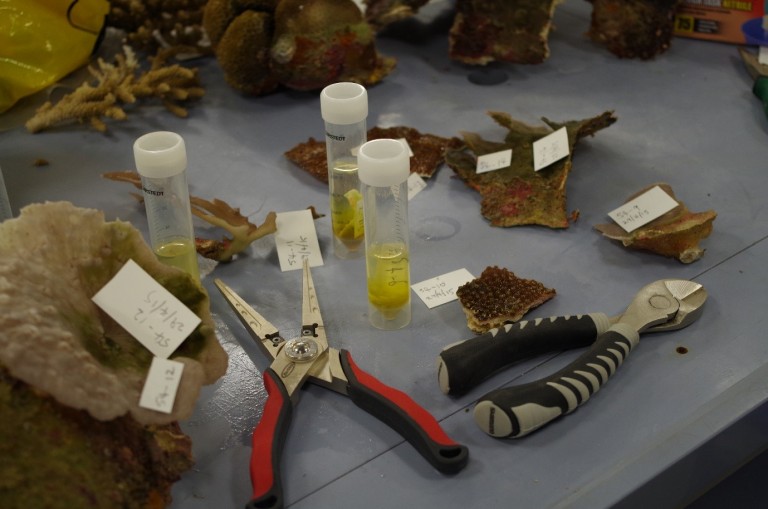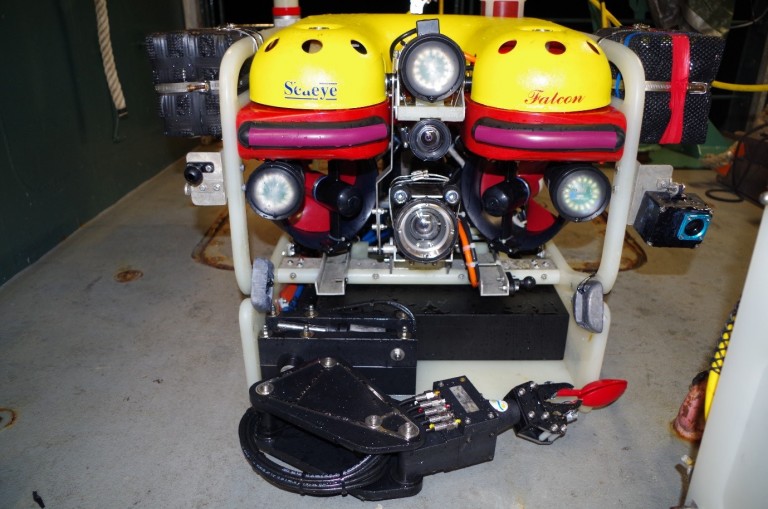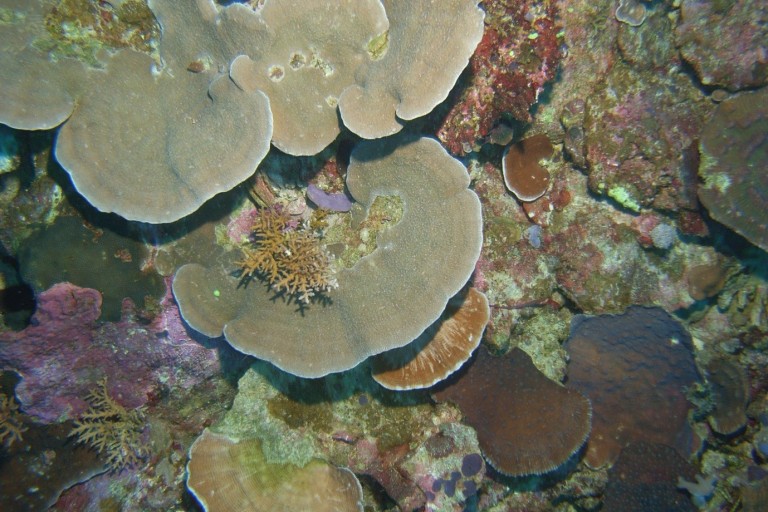
Scott Reef’s shallow areas support at least 230 species of scleractinian (hard) corals. Taxonomists who have collected samples at Scott Reef in previous years estimate a range of 250-300 reef building coral species across the shallow reef areas. This is considerably less than the approximate 600 species found in the ‘Coral Triangle’, an area of highest diversity centered around the Philippines, Indonesia, and Papua New Guinea.

The deeper lagoon that we have been surveying at South Scott lagoon has large areas abundant in hard corals, but extensive ROV surveys suggest diversity is relatively modest. Some corals in the mesophotic (deep) lagoon occur across a wide range of depths, say 5-50 m., and are the same as those building corals in the shallow reef locations. A few species, such as the three branching corals making up the Acropora elengans group, may be more specialised and only found in very sheltered or deeper waters.
From shallow to deep

Small grabs lowered to the seabed from the ship have been used to sample corals during this expedition. Analysis of those samples has revealed 42 scleractinian species collected in depths of 40-70m. Of those coral samples, 34 also occur on shallow sites. This means that the population sizes and functional footprint of many species being studied by scientific divers extend well beyond the typical shallow reef sites where researchers spend most of their time.
Deeper reservoirs
Overall, South Scott Reef covers around 400 square kilometres with the shallow and emergent areas contributing to one quarter of the reef and the rest being the deeper central lagoon habitats. The shallow reef has periodically been disturbed by coral bleaching events and storms, but the impact of these agents of change on the deeper lagoon is likely to have been much less. Identifying which coral species occur in the deeper lagoon is important not just to provide a more complete measure of biodiversity, but also to understand the potential for the deeper lagoon area to provide a reservoir of species to replenish any disturbed in the shallows.
Scott Reef appears to be a healthy reef system and the coral habitats are significant in their spatial extent, which is especially true for the deep phototrophic assemblages we have been observing in the central lagoon. Deep water coral communities have been documented in other regions around the world, however, it is likely this single mesophotic reef lagoon system accounts for a large proportion of this coral habitat type in the Australian north-west marine bioregion.
On board Falkor we have used the ROV to gain a detailed update on the habitats in the deeper lagoon and are now starting to use the ROV for targeted sampling of individual species that are more difficult to collect with traditional methods. It is painstaking work, but gradually we are expanding our knowledge of deep shallow linkages across this large reef system.
